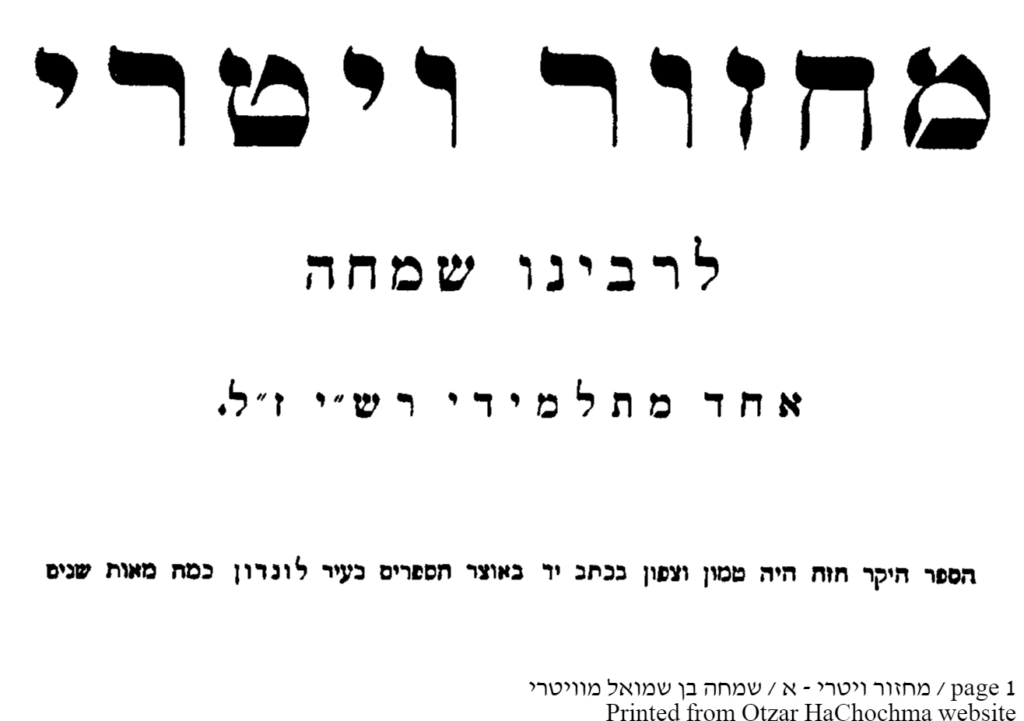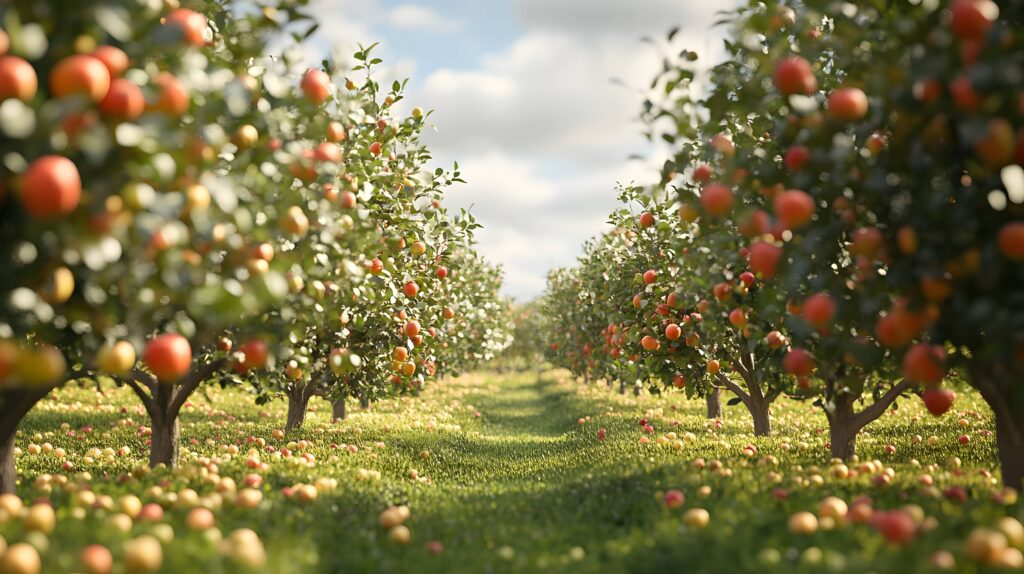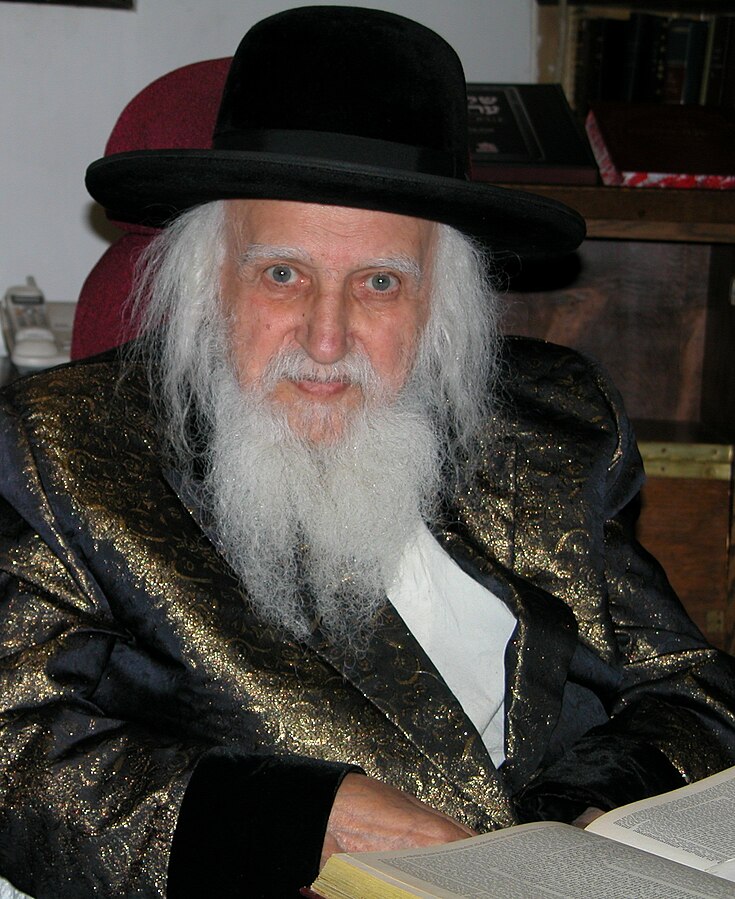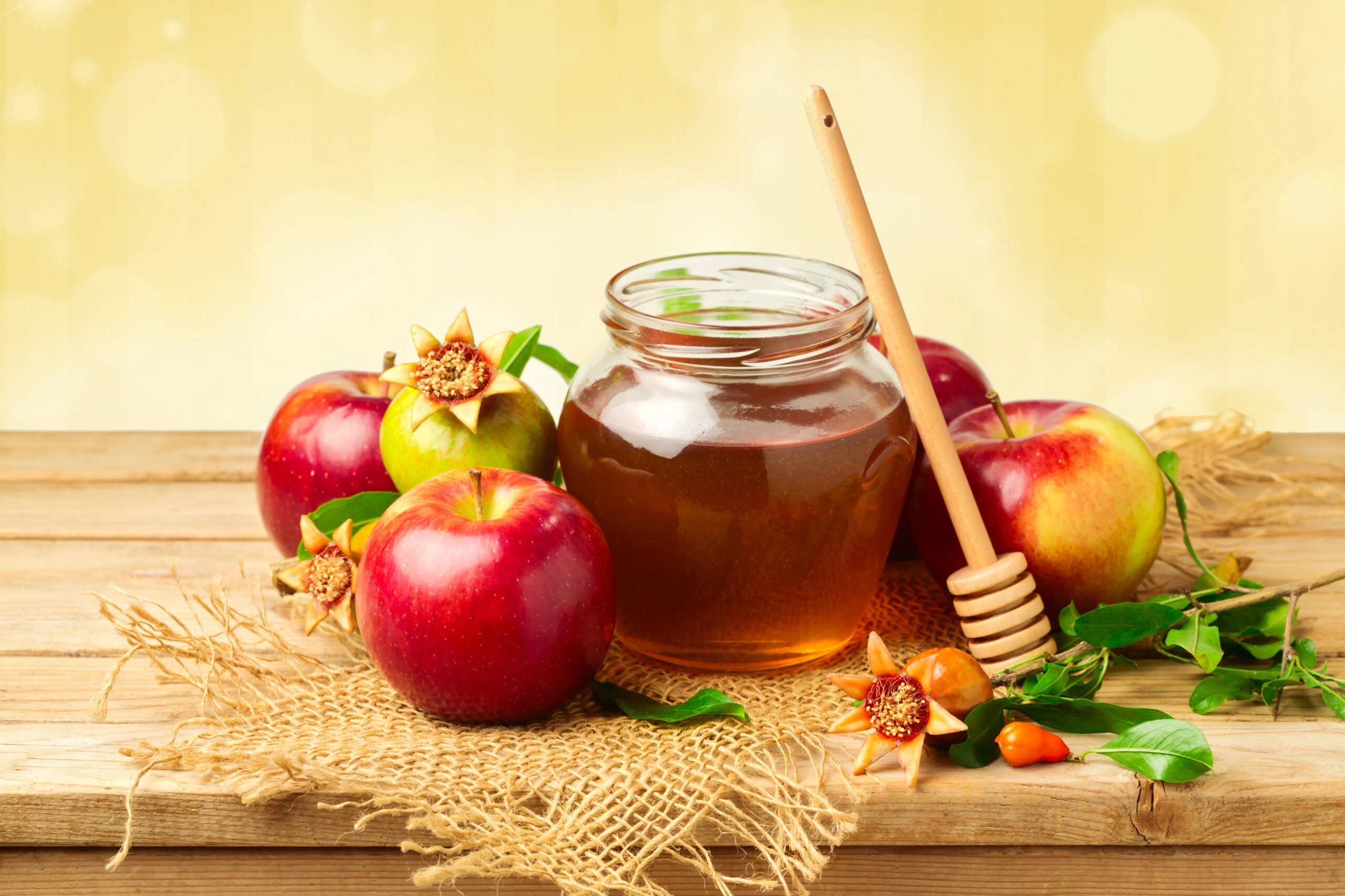Long before the U.S. technology company Apple made it an icon, the apple was a symbol of wisdom. Legend has it that the English scientist Isaac Newton discovered the principle of gravity when a falling apple struck him on the head, and in fact it is common knowledge that the Pri Etz Hadaas was an apple.
While the Gemora (Sanhedrin 70a) and the Medrash (Bereshis Rabba 15:7) bring different opinions among the Tanaim as to what the Pri Etz Hadaas was: Wheat, grapes, figs, or esrog; no opinion is cited that it was an apple. However, as we will see later, such an opinion seems to exist.
The minhag of dipping an apple in honey is one of the most common simanim on Rosh HaShana, although it’s not mentioned in the Gemora, which discusses the simanim.
According to the Israeli Ministry of Agriculture and Rural Development, 1,500 tons of honey worth 40 million shekels are consumed in Israel during the High Holidays, and apple consumption increases by 68%.
But where did this minhag come from, and what is the message we should take with us for Rosh HaShana? In the tefila for the apple and honey, we ask Hashem to bless us with a sweet new Year (like the sweetness of honey), but there must be a deeper understanding.
The oldest source for the tradition of eating apples on Rosh HaShanah comes from the Machzor Vitri, written in the 11th century, which states that “the Jews in France have the custom of eating red apples on Rosh HaShanah“.

Interestingly, this source only mentions red apples – perhaps because they are sweeter – while honey is not mentioned at all.
In fact, the custom of using honey on Rosh HaShanah is even older than the apple custom, and was practiced by Rabbi Natronai Gaon (apples are not mentioned).
The apple and honey custom as we know it is found centuries later in the Tur (Rabbi Yakov ben Asher), who calls it “Minhag Ashkenaz”. The Maharil (Rabbi Yakov Levi Molin), who is a source for many minhagei Ashkenaz, also mentions it.
The Ramo brings this minhag into the Shulchan Aruch, and so it is common among all Ashkenazi Jews. Sephardic Jews have different traditions, and while Moroccan Jews also eat apples with honey, other Sephardic communities avoid honey on Rosh HaShanah for kabbalistic reasons, as it symbolizes din. According to Ben Ish Chai of Baghdad (1835-1909), apples should instead be dipped in sugar or baked with sugar.
However, the connection between apples and honey remains a question.
After Yaakov, dressed as Esav, appeared before Yitzchak to receive the brachos, the Torah describes that Yitzchak smelled his clothes and subsequently blessed him (Bereshis, chapter 27, verse 27).
Rashi quotes the Medrash that Yitzchak perceived the smell of Gan Eden, and the Gemora that “the smell of the fields” refers to apple orchards. It appears that apples symbolize the Gan Eden, and this could be a possible source for the assumption that the Pri Etz Hadaas was an apple.

The Gemora notes that tzaddikim are inscribed in the Sefer HaChaim on Rosh HaShanah, which according to some Rishonim refers to the Gan Eden. Therefore, during Rosh HaShanah, an apple symbolizing Gan Eden is used to request immediate inscription in the Sefer HaChaim. In addition, the Gemora draws a comparison between Am Yisroel and apple trees, further establishing the symbolism of apples for Am Yisroel .
This explanation gives us an understanding of why apples are used, but not why we eat honey and especially why we dip the apple in the honey.
The Rosh (Rabbi Asher ben Jechiel 1250-1327) in his commentary on Berachos quotes the opinion of Rabbenu Yona of Gerondi (1200-1263) that honey can be consumed despite the possible remains of bees because of the ability to transform its contents into honey.
The Gemora says that if one returns to Hashem out of fear, his averos are forgiven. However, if they do so out of love for Hashem, all their averos are transformed into zechuyos!
Rav Menashe Klein (1924-2011) combines these two ideas and provides us with an incredible explanation for the symbolism of dipping apples in honey on Rosh HaShanah.

As we have seen, according to some opinions, the Pri Etz Hadaas was an apple, and thus the apple symbolizes the first (and most serious) avera in human history. Honey, as Rabbenu Yona explained, has the ability to transform something forbidden into something kosher. Therefore, we dip the apple in honey to remind ourselves that when we do teshuvah out of love for Hashem, all our averos turn into zechuyos!
Throughout the year, we use salt, which is an ideal preservative, but it can’t turn something bad into something good. On Rosh HaShana we switch/add honey to remind us of Hashem’s eternal love and longing for His children, and that if our love for Hashem motivates us to teshuvah, He will turn everything into zechuyos.
He uses the same concept to explain a medrash in Bereshis Rabba which raises the question of whether Hashem is more interested in maasehem shel reshaim or maasehem shel zadikim, and brings a raya that Hashem prefers maasehem shel zadikim.
This Medrash is a Medrash Pliyah?! What was the Medrash´s initial thought that Hashem would prefer maasehem shel reshaim?
Rav Menashe Klein explains that the question of this Medrash was that maybe Hashem wants the maasehem shel reshaim who did teshuva meahava and turned all their averos into zechuyos more than the maasehem shel zadikim who only did mitzvos.
When we dip the apple in the honey and say “shetechadesh alenu shana tova umeska,” we should realize the potential of Rosh HaShana and the incredible heights we can reach with our teshuva.
Wishing everyone a shana tova u´mesuka and may Hashem turn our averos to zechuyos!
(Originally published on Mishpacha.com © The Mishpacha Group Inc. All rights reserved)




